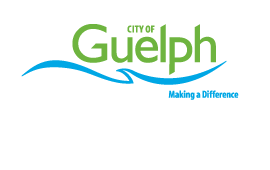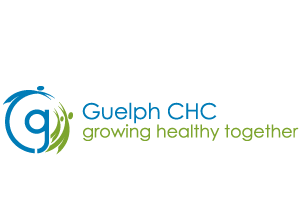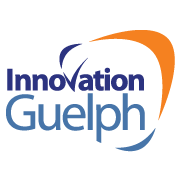Project proposals submitted to The Elevator Project are evaluated in a few different ways:
- Project proposals are read by Elevator Project staff and Founders to ensure they meet the minimum eligibility criteria.
- Peer review. All applicants to the full project proposal stage will have the opportunity to engage in the peer review process at our Hall of Ideas event.
- Full project proposals are read by our Community Panel. The Community Panel is nominated from the community. They will use our rubric (detailed below) to assess each project individually. They will also make funding recommendations for a confirmed pot of money from select funders.
Rubric for The Elevator Project – Getting to “Great” Projects
The rubric can be used by Idea Makers to assess their project readiness and will be used by the Community Panel to assess the merit of each project individually. Based on how they score, projects will be sorted into three categories: (Planning score of 0-25, Development score of 26-54, Deployment score of 55-70). These categories will be published on our website along with each project description and used by investors as pieces of information when they are determining which projects to invest in. Idea Makers will privately receive details of their score that they can use to further their project development.
Each section aligns with a question on the full project proposal form and has a total possible mark of 10. A mark of 10 means the project has achieved the “Great” Standard in that section or in other words, is investor ready. The Great Standard is explicitly defined for each answer, as is what a “0” looks like.
- Eligibility
- Is the project application complete? Y/N
- Is the project going to happen in Guelph or impact Guelph residents? Y/N
- Is the purpose of the project for community benefit? Y/N
- What problem am I trying to solve? Why is it a problem?
The “Great” Standard 10= Group has clearly identified the problem they are trying to solve and why it is a problem. There is evidence that they have conducted research to support their theory and talked to others to validate their ideas.
7-10= Quite a bit of evidence of the Great Standard
1-6= Some evidence of the Great Standard
0 = Group hasn’t considered what problem their project solves. They have conducted no research and talked to no one to validate their idea.
- What is the idea? How are you going to solve the problem?
The “Great” Standard 10= Group clearly articulates how they are going to solve their identified problem. It is easy to understand what they hope to achieve. There is no jargon, acronyms or other confusing language. Their solution makes sense for the problem they are trying to address.
7-10= Quite a bit of evidence of the Great Standard
1-6= Some evidence of the Great Standard
0 = Idea is unclear and not well articulated and/or idea does not make sense to address the stated problem. Group seems to be “a solution in search of a problem”.
- Who will benefit from my idea? And how?
The “Great” Standard 10= Group has identified a large group or niche group of community members (target market) whom this project will benefit. They are able to clearly define their target market by segments (gender, age, income, etc). There is evidence they have a plan to reach their stated market and that they have validated their plan by either discussing their idea with key market members or run a pilot of their idea.
7-10= Quite a bit of evidence of the Great Standard
1-6= Some evidence of the Great Standard
0 = Group has not identified a target market or strategy, or naively feels everyone will be a user.
- How will I know if my project is successful? (What things will have changed? What can we measure?)
The “Great” Standard 10= Group clearly articulates what their success will look like and has achievable plans to measure that success. They have clearly defined what will be different in the community as a result of their project. Project demonstrates significant potential positive impact on the community.
7-10= Quite a bit of evidence of the Great Standard
1-6= Some evidence of the Great Standard
0 = Group has no idea or wildly unrealistic ideas about what success looks like for their project. They have no way to measure their success. They have not articulated what will be different in the community as a result of their project. The project will have little to no impact on the community.
- What makes my solution the right solution? What sets my solution apart from other currently available solutions?
The “Great” Standard 10= The project has a clearly defined “unique” value proposition. It is clear they have researched other potential solutions and/or others solving the same issue in the community. The solution is innovative or just plain fun. The project innovatively enhances existing or model programs or is a brand new thing that doesn’t exist yet.
7-10= Quite a bit of evidence of the Great Standard
1-6= Some evidence of the Great Standard
0 = Group has not developed a clearly defined value proposition. They have no idea why their solution is the right one and they have not completed any research into who is currently solving this problem in the community and how. Their solution unnecessarily duplicates other work already being done on the community. The project is not innovative or fun.
- Why are we the right people to solve this problem?
The “Great” Standard 10= Group has clearly defined the skill sets required to tackle their problem and recruited the appropriate team members to fulfill those requirements. Team is well balanced and dedicated. Leadership has the vision, experience and network to deliver results. Team has dedicated time to work on the project. Team has the confidence and tenacity to go the extra mile. There is evidence they are working in cooperation and/or collaboration with other groups who are working towards similar goals.
7-10= Quite a bit of evidence of the Great Standard
1-6 = Some evidence of the Great Standard
0 = Group has one founder with little to no project management experience. The combined skills of the leadership team have never managed a project or led a team, have limited experience with no accessible network. There are obvious gaps in the skill sets required to execute the project with no acknowledgement of the gaps and how they intend to fill them. There is no evidence they have been in contact with other people or organizations solving similar problems.
- What resources do I need to make my project a success? What resources have I already gathered?
The “Great” Standard 10= Group has identified a realistic amount of monetary funds and/or other resources needed to complete the project. There is evidence they have considered the smallest version of their idea that could still be effective in solving their stated problem. The project is cost effective based the impact they expect to have. The resources they seek are beyond just funds and/or they have considered alternative ways of funding their project such as donated services or goods (if appropriate). Group has already secured some resources.
7-10= Quite a bit of evidence of the Great Standard
1-6= Some evidence of the Great Standard
0= Group has set a wildly unrealistic and unattainable goal for funding. They are relying entirely on support to come from The Elevator Project and have not found any resources themselves to date. The project is very expensive for the planned community impact.




